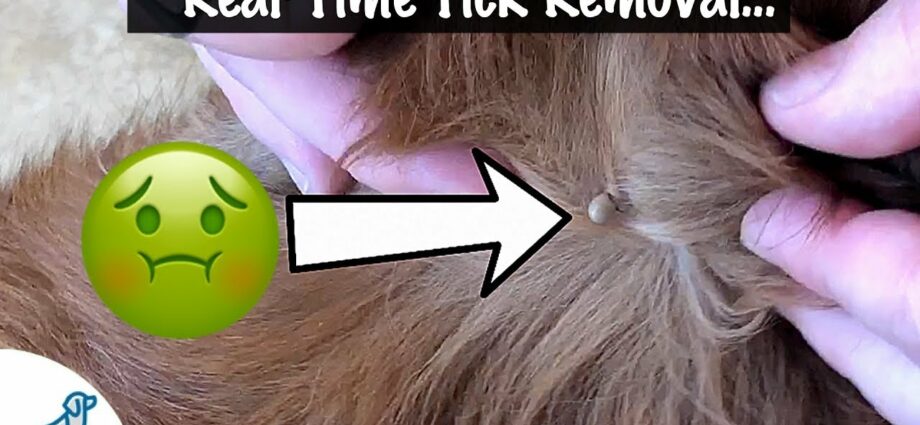Contents
Dog tick: how to remove a tick?
What is a dog tick?
The dog tick – Ixodes, Dermacentor or Rhipicephalus – is a large hematophagous mite, that is, which feeds on blood in order to live. It clings to the tall grass while waiting for the passage of a prey. Attached by the head to the skin, the dog tick can stay there for 5 to 7 days while it finishes its blood meal. During this meal, it releases saliva into the blood stream of its prey.
Over time, it will grow larger until it reaches the size of a large pea. Once she has finished eating, she breaks away from the dog’s skin and drops to the ground to molt or mate and lay eggs.
Ticks are most active in spring and fall.
My dog has a tick
Ticks have a very particular shape that changes depending on when they are found.
They have a very small head surrounded by many legs (8 in total), often difficult to count. Behind the legs is the tick’s body, larger than the head. Before biting the dog or at the very start of the blood meal, the tick’s body is small and barely the size of a pinhead. The tick may appear white or black.
When she is gorged with blood, the size of her abdomen gradually increases and changes color: it becomes whitish or grayish.
Why should a tick be removed from the dog?
Always remove ticks from your dog as soon as possible. Indeed, ticks are vectors of several serious and fatal diseases for dogs, such as piroplasmosis, Lyme disease (Borreliosis) or ehrlichiosis for example.
How to prevent tick contamination?
There are vaccines against piroplasmosis and Lyme disease in dogs. You can have your dog vaccinated against both diseases if he is often exposed. He can still get one of the two diseases from these vaccines, but it can save his life if he gets infected.
Protect your dog with an external antiparasitic that works against dog ticks. They are generally active against dog fleas. Use these products even if he is vaccinated, it will increase his protection and the vaccines do not protect against all the diseases transmitted by the tick of the dog. Your veterinarian will advise you on the best treatment to apply for your dog (pipette or anti-tick collar).
Check your dog’s coat and skin and look for ticks after every walk and especially if you go woods or forests. You can get into this habit even if the dog is vaccinated and treated against ticks.
Not all ticks carry the pathogens, so if you find a tick on your dog remove it with a tick hook, preferably before it is filled with blood. Then monitor for the following 3 weeks the urine, appetite, general condition and if it is depressed, thetemperature of the dog. If the urine turns dark, has a fever, or suddenly starts to limp, see your vet and let him know when you removed the tick.
How to remove a tick?
To remove a tick, you should never use ether or tweezers.. You could leave the tick’s “head” in your dog’s skin and create an infection. It can also encourage the tick’s saliva to escape into the bloodstream and increase the risk of tick contamination if they are carriers of the pathogen of piroplasmosis in dogs, for example.
To properly remove a tick, we use a tick hook (or tick puller) of the size appropriate to the state of engorgement of the tick. They are available for sale from all veterinarians. The tick hook has two branches. You have to slide the hook over the skin and place the branches on either side of the tick. Then you have to turn gently and slightly pulling the hook upwards. Stay close to the skin. Hair may get tangled during the maneuver gently detach them. After several turns, the tick withdraws on its own and you collect it in the hook. You can kill her. Disinfect your dog’s skin. The sooner the tick is removed, the less risk there is of contamination of the dog.










